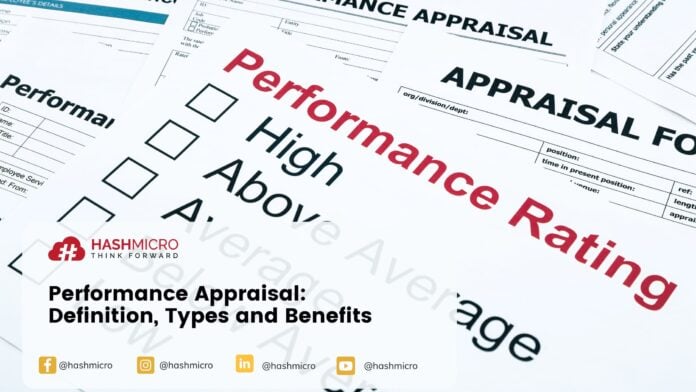All employees desire to benefit as much as possible from their employers. Therefore, companies also need to use performance appraisal to meet their workers’ expectations. Though employers need to entice their workers, it should not be at the expense of the company. As a result, workers can only be appreciated based on their contribution to the company. Companies often use competency management and training to improve staff skills and measure their performance.

Table of Content:
Table of Content
What is performance appraisal?

Performance appraisal regularly reviews employees’ job performance and overall contribution to a company. It is a key performance management component and helps evaluate an employee’s skills, achievements, and growth. Performance appraisal is conducted at any given time, such as annually, semi-annually, or quarterly, depending on the company’s needs.
Types of performance appraisal
The following are the four types of performance evaluation that need to be applied by employers. These four types can be of use to any company and employee in the process of evaluating performance.
1. Self-assessment
It is the type of performance evaluation that assists individual employees in evaluating their performance. It also makes it easy for individuals to rate their job performance and behavior. Therefore employees can assess their performance in comparison with the company’s expectations. Before employees make demands to the employer, they must know their value.
2. Peer assessment
Besides self-assessment, peer assessment is the second type of performance judgment. It assists an individual’s workgroup or coworkers rate his or her performance. It also enables individual employees to compare their evaluations with those of their colleagues.
3. 360-degree feedback assessment
Apart from peer assessment, 360-degree feedback gives individuals feedback from their supervisor and peers’ evaluation. It enables the employee to know their performance rating based on their supervisor’s and peers’ evaluations.
4. Negotiated appraisal
Lastly, the negotiated appraisal is the last type of performance evaluation. The negotiated appraisement applies in situations of conflict between employees and their supervisors. In performance appraisal, a mediator evaluates the employee and focuses on the good side of performance rather than criticism.
A common tool used in performance appraisal is a performance review template. This template provides a structured format for evaluating employee performance based on specific criteria.
Benefits of performance appraisement

Additionally, performance appraisement has the following benefits:
1. Improves employee performance
Performance appraisal helps in improving employee performance. The employee can evaluate his or her performance individually in the company from time to time. Therefore employees can improve in areas they do not perform well and maintain their good performance.
On the other hand, it helps the company to keep productive employees. It also enables the company to run a cost-effective budget. This is because the company can pay the employee based on their contribution.
2. Eases promotions and transfers
Furthermore, it makes it easy for employers to promote their employees. The employer can spot the best-performing employees and appreciate them by way of promotion. It motivates employees, thus helping them to increase their performance.
On top of that, performance appraisal makes it easy for the employer to transfer an employee from one company branch to another. It makes it easy for the top management to move a good-performing employee from branch A to branch B.
3. Increase in salary and compensation
Last but not least, employers can evaluate salary increments for their employees. It enables employers to know each employee’s contribution, thus increasing salary for those that receive less than their contribution. Employers can use HR Software to accurately calculate salaries based on employee’s working hours, overtime, and attendance.
Secondly, it enables employers to determine employees’ compensation by allocating benefits like cash and vacation to their employees. That assists the company in keeping their employees compensated based on their contribution.
4. Helps to detect performers
And lastly, it assists employers in detecting high-performing employees in the company. The evaluation of employees enables the employer to know the low, average, and high-performing employees. Therefore, it makes it easy for the company to appreciate outstanding employees.
Conclusion
In summary, companies that have adopted performance appraisal practices find it easy to evaluate their employees’ contributions to the company. Therefore it also makes it easy for the company to pay its staff without the employees benefiting less or more than their contribution.
Companies will benefit from an efficient work process with the correct assessment method. As a result, it will drive companies one step closer to their goals. Accomplish efficiency in assessing employee performance with HRIS software. HRIS software from HashMicro allows you to manage promotions, payroll, and employee contributions objectively and effectively. Sign up now for a free demo!


































